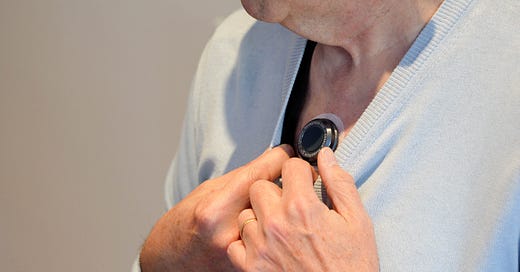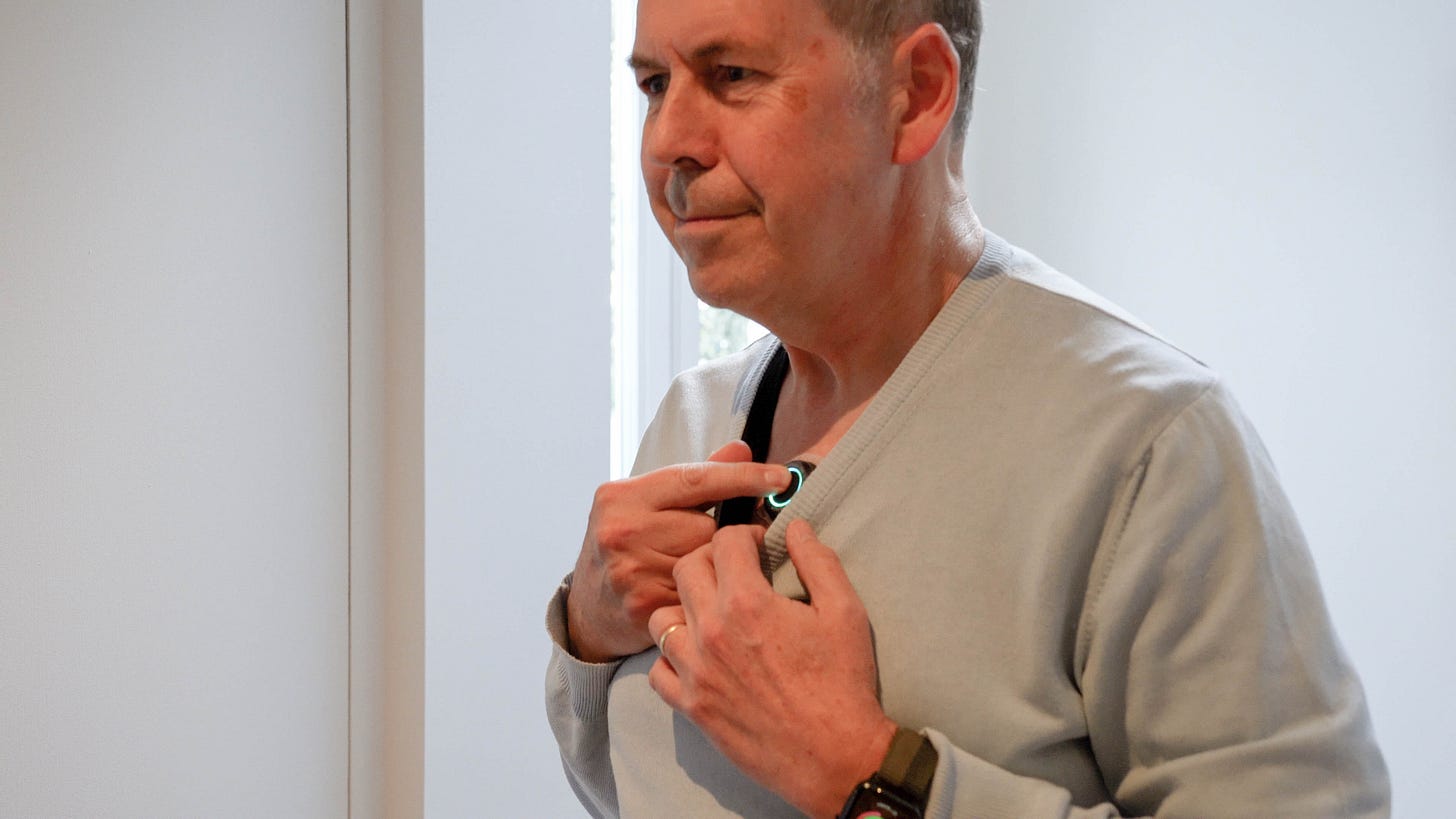I love a new gadget, I’m interested in healthtech, and I’ve got Parkinson’s. So when I heard about a company called Charco with an intriguing wearable device which might alleviate my symptoms I got in touch.
The next thing I knew, four members of the young Charco team were spending three hours at my kitchen table telling me about the Cue-1 device, fitting me out with one, and testing its effect after I had worn it for an hour. When they left, I felt as though I needed a lie-down but also that their sheer energy showed that this was a medtech company worth watching.
Charco was born out of a student project in 2014 for the Imperial College and Royal College of Art’s innovation design engineering course. The student was Lucy Jung and her project was about using what’s called focused or vibration stimulation to alleviate the symptoms of Parkinson’s, an idea first suggested by a 19th century French physician Jean-Martin Charcot. In 2019 Lucy and a young doctor, Floyd Pierres, founded Charco with the aim of developing a wearable device that would deliver vibration stimulation in a simple way to the user.
Within a short space of time they won venture capital backing and brought their first device the Cue-1 to the market. It was Lucy and Floyd who arrived in my kitchen this week with two of their colleagues and a device for me to try. The Cue-1, as beautifully packaged as an Apple device, looks like a small yoyo and comes in a charging case rather like a jewellery box.
The user first has to apply an adhesive patch to their chest and then attach the Cue-1. Press the button in the middle of the device and it begins vibrating gently, making a buzzing noise which is quite audible when you are in a quiet environment. The strength and tempo of the vibration can be controlled by a smartphone app.
Lucy explains that as well as providing vibration stimulation the device uses cueing, quite a well-known technique in the treatment of Parkinson’s. It involves providing a rhythmic signal to the body and can apparently have a positive effect on gait, lessening the threat of freezing, where you come to a halt, unable to move.
The Cue-1 has been through the regulatory process in the UK to get approved as a medical device and is on sale at £299. That is a chunky price and there is a way to go before the gadget gets the nod from NICE and can be prescribed on the NHS. But there is a long waiting list of those wanting to buy the product, including many people in the United States where it cannot go on sale until it gets approval from the FDA.
But here’s the $64,000 question - does it work? Another member of the team in my kitchen was Alex Dallman-Porter, also a graduate of the Imperial innovation design engineering course but with a degree in neuroscience. He’s been trained in UPDRS, the system doctors use to quantify Parkinson’s symptoms and before we set up the Cue-1 he put me through a familiar set of exercises. He manipulated my limbs, made me walk around the kitchen, pulled me back by my shoulders suddenly to see how easily I would recover my balance, and then calculated my UPDRS score.
Then after an hour of sitting chatting with the Cue-1 buzzing on my chest, he put me through the whole rigmarole again. This time, he told me, there was an improvement of nine points in my UPDRS score - a 3 to 4 point boost is usually seen as clinically significant. When I pointed out that there must be a placebo effect from knowing I was wearing the device and expecting an impact on my symptoms, he agreed but said my result was still more than could be accounted for by such an effect.
The Charco team has been running trials with more and more users, and is growing confident that people are seeing long-term improvements in their symptoms. I remain slightly sceptical as I always am about treatments that have yet to go through large-scale trials producing peer-reviewed evidence of effectiveness.
But I can’t help being impressed by Lucy Jung and her Cambridge based team, now 33 strong. Lucy admits there’s a way to go before there is rock solid evidence that this device can produce major improvements for a wide range of people but she quotes one of the trial users:“He asked me ‘do you know how much it means for people with Parkinson's to take one extra step? And if it's even 1% of improvement, you know what that means for people?’”
Once the first device has proved itself, there is a Cue-2 almost ready, with new features including data collection and storage. This will be vital if clinicians and researchers are to have any detailed overview of how a patient responds to vibration stimulation at different times.
My symptoms are still relatively mild, and after wearing the Cue-1 for a day, it is hard for me to judge whether it is having an effect. But I intend to keep it buzzing away for a few weeks and I will report back on my experience.







I'm amazed that you consider £299 "a chunky price"! You're wearing IP that has cost millions, produces a significant improvement in your condition within an hour which is similar to drugs with negative side affects that cost 20-100X. I'd say it is too cheap! If I had Parkinson's I'd be happy to pay big money to alleviate or slow down the symptoms.
It's been a while since you published the article. Please update us on the latest situation whether the CUE1 is helping you or not